18 Shocking Vintage Photos Of What Classrooms Looked Like In The 1950s
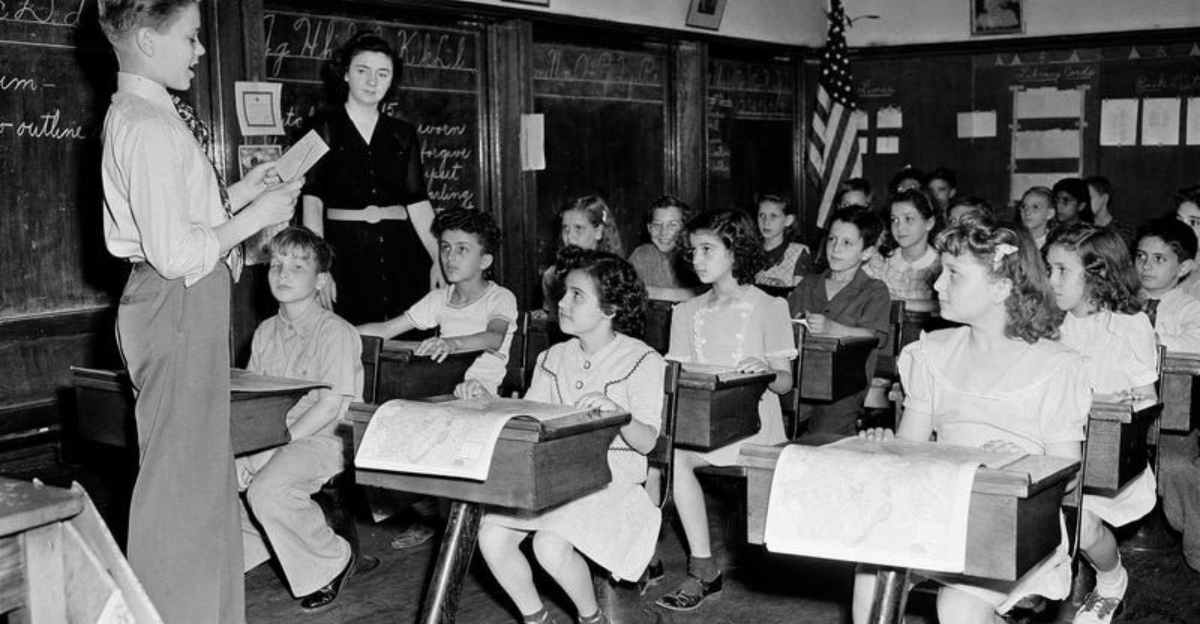
Growing up surrounded by smartphones, tablets, and instant internet access, it’s hard to picture a world where school didn’t include screens.
So when I stumbled upon my grandmother’s school photos from the 1950s, I was genuinely stunned! The classrooms looked like something out of a history book—chalkboards, wooden desks, and not a single electronic device in sight.
Education back then was a far cry from today’s tech-driven environment. Instead of Google, they had encyclopedias. Instead of Zoom, they had perfectly practiced penmanship and strict dress codes. In this post, we’re taking a nostalgic journey back to the days of poodle skirts, lunchboxes, and rock ‘n’ roll, exploring what school life was like for our grandparents.
From morning pledges to cursive writing drills, it’s a fascinating look at how much has changed—and how much we might still learn from the simplicity of the past.
1. Desks Bolted to the Floor
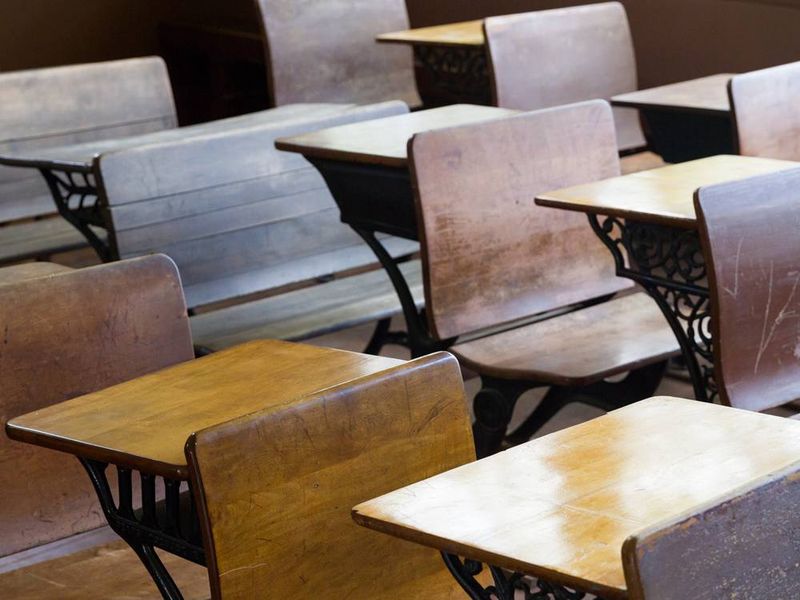
Forget flexible seating arrangements! Back in my grandma’s day, students were literally fixed in place. Those heavy wooden desks weren’t going anywhere – they were bolted directly to the floor in perfect rows like little academic soldiers. No group work circles or collaborative pods here!
Each desk featured a built-in inkwell (that’s right, for actual ink) and a cubby underneath for books. The desktop portion was often carved with generations of student initials and doodles – an analog version of leaving your mark that would give today’s school administrators heart palpitations.
The rigid arrangement reflected the teaching philosophy of the time: face forward, eyes on teacher, and absolutely no moving around during lessons. My grandma recalled getting scolded just for turning to borrow an eraser!
2. Duck and Cover Drills
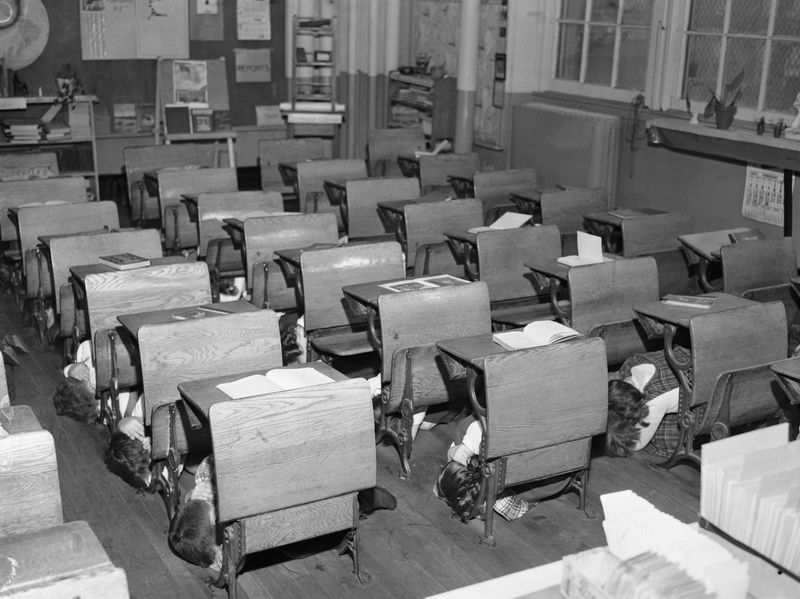
Yikes! Nothing screams Cold War paranoia like tiny tots diving under their desks at the sound of an alarm. These surreal safety exercises were a regular feature in 1950s classrooms, where the looming threat of nuclear war cast a shadow over multiplication tables and spelling bees.
Teachers would suddenly yell “Duck and cover!” sending kids scrambling beneath their desks, covering their heads with their arms as if wooden furniture could somehow shield them from atomic fallout. Schools even distributed bizarre turtle mascot comics explaining how to protect yourself from a nuclear blast.
My uncle Bill still remembers the eerie civil defense films they’d watch, featuring Bert the Turtle demonstrating the proper technique. Talk about childhood trauma disguised as safety education!
3. Chalkboard Punishment

“I will not talk in class” written 100 times? Child’s play compared to the real deal. Misbehaving students often found themselves nose-to-nose with the chalkboard, arms raised high, holding a heavy dictionary in each hand until their muscles screamed for mercy.
Other creative punishments included standing on one foot in the corner while balancing books on your head or having your knuckles rapped with a ruler. My grandfather once told me he had to wear a dunce cap after failing a spelling test—talk about public humiliation!
These disciplinary methods weren’t just accepted; they were expected. Parents typically backed teachers’ authority without question. When students brought home tales of classroom consequences, they often received additional punishment at home rather than sympathy. Spare the rod, spoil the child was the mantra of the day.
4. Gender-Separated Activities
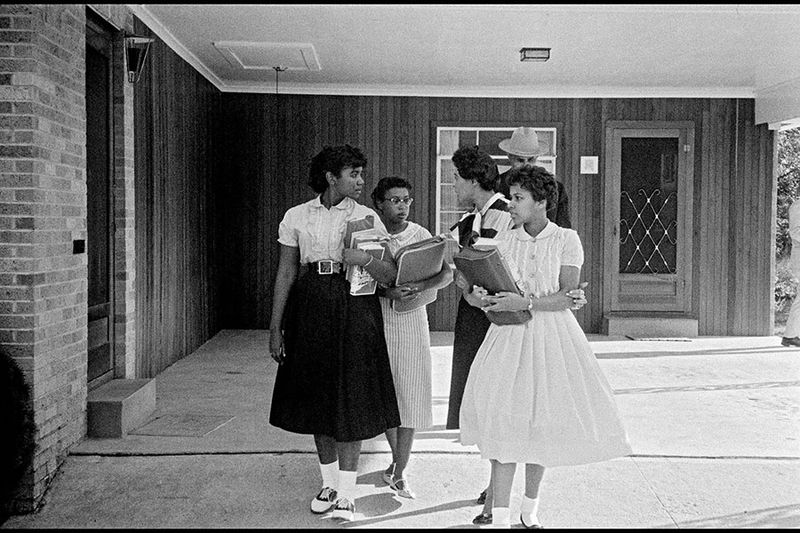
Boys shooting hoops while girls practice homemaking? Welcome to the fabulous fifties! Classrooms were breeding grounds for gender stereotypes that would make modern educators faint. The division was crystal clear and rarely questioned.
Girls spent hours in mandatory home economics classes, learning to sew aprons and bake perfect pies. Meanwhile, boys hammered away in shop class, building birdhouses and learning basic car maintenance. My mom still laughs about how she secretly wanted to take shop class but wasn’t allowed – despite being the handiest person in our family!
Even recess activities were strictly divided along gender lines. Boys played competitive sports while girls were encouraged toward jump rope and jacks. These divisions weren’t just social norms; they were deliberately structured to prepare children for their “natural” adult roles in society.
5. Milk Break Rituals
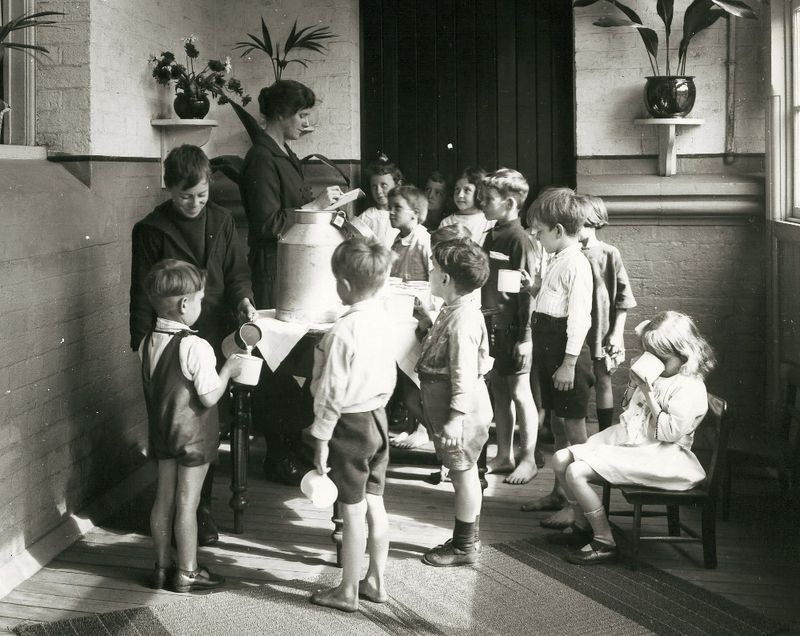
Forget fancy juice boxes and organic snacks! Mid-morning milk breaks were serious business in the fabulous fifties. Every day at precisely 10:30 AM, little glass bottles of milk appeared on each student’s desk like clockwork – room temperature, of course, because refrigeration wasn’t always available.
The designated milk monitors (what an honor!) would distribute these miniature bottles along with paper straws. Some lucky schools even had metal carriers that held exactly 24 bottles. My grandmother recalled how the cream would separate and float to the top, requiring a good shake before drinking.
These milk breaks weren’t just about nutrition – they were government-subsidized programs designed to support the dairy industry while ensuring children received calcium. Lactose intolerance? Dairy allergies? Those weren’t recognized concepts back then. You drank your milk or faced the consequences!
6. Fountain Pen Requirements
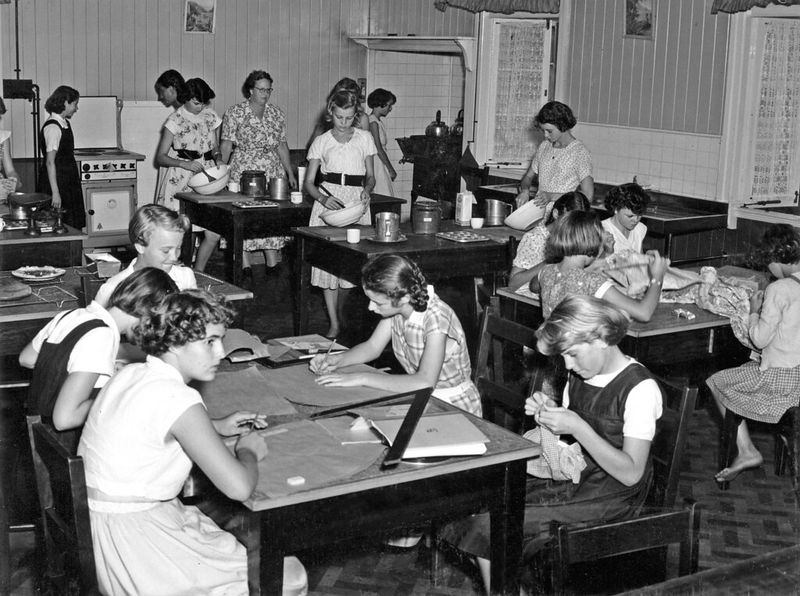
Ballpoint pens? Absolutely forbidden! I nearly spilled my coffee when my great-aunt showed me her perfect penmanship samples from third grade. Students in the 1950s were required to master the art of writing with actual fountain pens, complete with messy ink bottles and blotters.
Learning proper penmanship wasn’t just encouraged – it was practically a core subject. Teachers would walk up and down aisles inspecting how students held their pens, the angle of their paper, and even their posture while writing. Left-handed students faced particular challenges, often forced to write with their right hands to avoid smudging.
Ink-stained fingers were a badge of honor (or shame, depending on how neat you were). My grandfather still has perfect Palmer Method handwriting to this day, and he credits those hours of painstaking practice with ink that couldn’t be erased once it hit the paper.
7. Film Strip Projectors

*Beeeep* – time to advance the frame! Nothing got us more excited than when the teacher rolled in that magical film strip projector. These clunky metal contraptions were cutting-edge technology in the 1950s classroom, requiring perfect darkness and a dedicated student operator.
Films came on long strips that had to be manually advanced when a beep sounded on the accompanying record or tape. Heaven help the poor kid who lost their place or advanced too quickly! My dad was the designated film strip operator in fifth grade and still brags about his important role.
The content was typically educational but often hilariously outdated even then – from bizarre health videos to dramatic tales of American exceptionalism. Students viewed these flickering presentations with rapt attention, not because they were particularly engaging, but because they provided a welcome break from regular lessons.
8. Mandatory Prayer Time
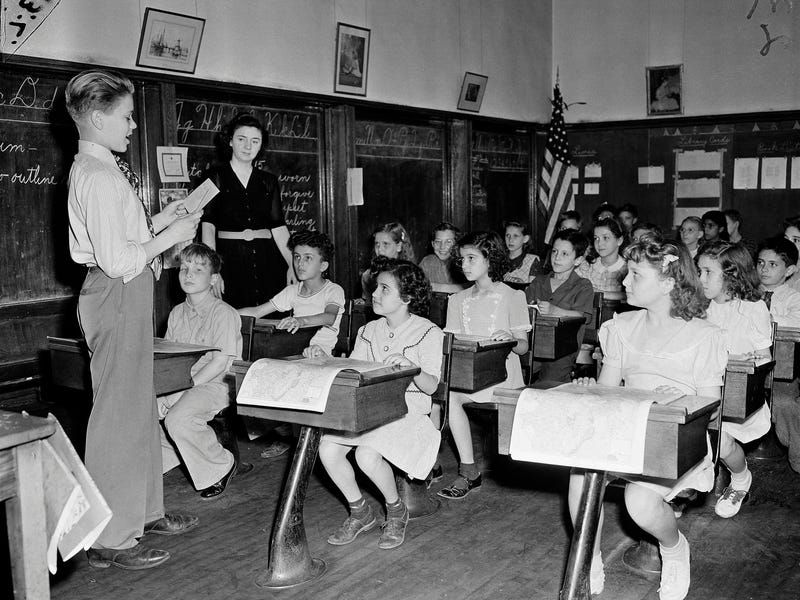
Hands folded, heads bowed – classroom prayer was as routine as the Pledge of Allegiance until 1962! Before the Supreme Court ruling in Engel v. Vitale, daily prayer was standard practice in public schools across America, regardless of students’ religious backgrounds.
Each morning followed the same ritual: flag salute, national anthem, and teacher-led prayer. My grandmother’s class recited the same prayer every day for years – she can still repeat it verbatim. Students who belonged to different faiths or had no religious affiliation weren’t typically excused; conformity was expected.
Prayer wasn’t limited to morning routines either. Many schools incorporated religious readings before lunch and at special assemblies. This practice reflected the less diverse, more homogeneous society of 1950s America, where separation of church and state in schools wasn’t yet strictly enforced.
9. Smoking Teachers’ Lounge
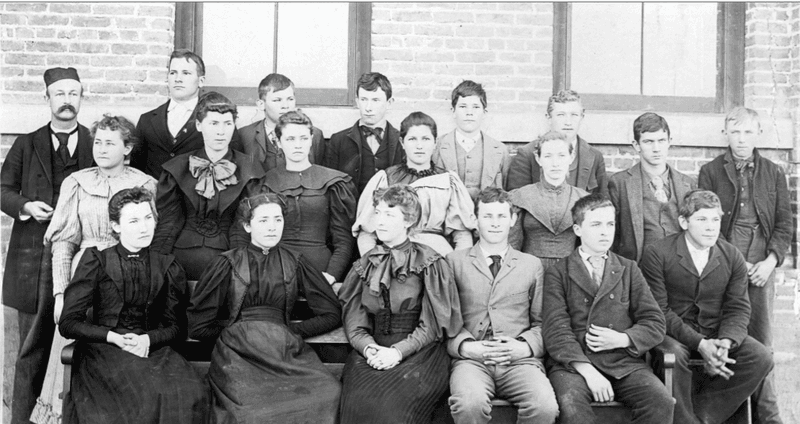
Clouds of cigarette smoke billowed from the teachers’ lounge between every period! When I mentioned this to my students today, their jaws practically hit the floor. In the 1950s, teachers puffing away during breaks wasn’t just accepted – it was practically mandatory social behavior.
These smoke-filled sanctuaries featured ashtrays on every table and windows perpetually cracked open regardless of weather. My mother recalls her fourth-grade teacher, Mrs. Henderson, who returned from each break trailing a distinct cloud of Pall Mall aroma that clung to her clothing and hair.
Some teachers even kept cigarettes in their desk drawers for quick smoke breaks while students completed quiet work. The concept of secondhand smoke dangers wasn’t on anyone’s radar, and the harsh smell of tobacco was simply part of the school’s ambiance – along with chalk dust and floor polish.
10. Paddle Displays
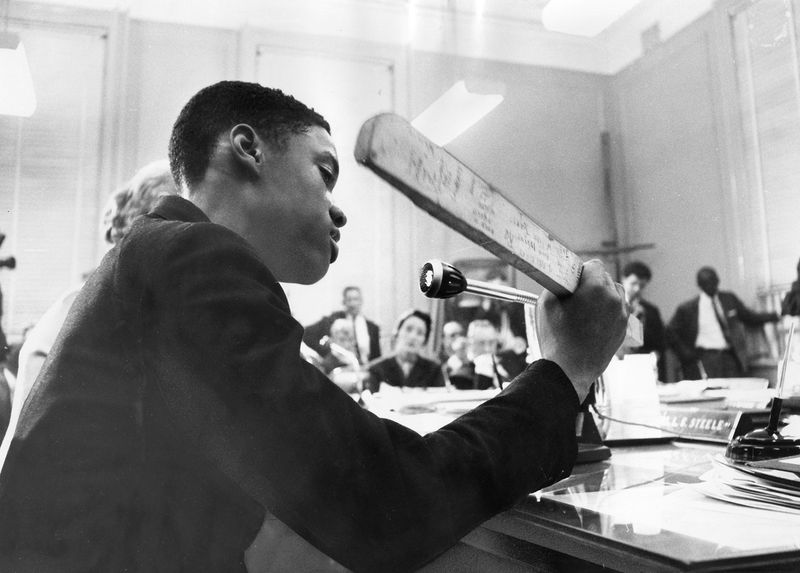
Principal Wilson’s office featured a wall-mounted wooden paddle with actual holes drilled through it – for less air resistance during swinging! This wasn’t some hidden disciplinary tool; it was prominently displayed as a deterrent and conversation piece.
Some paddles even had cutesy names burned into the wood: “Board of Education,” “Attitude Adjuster,” or “The Convincer.” My uncle still remembers his principal’s paddle had tally marks etched into it like some macabre scoreboard. Teachers and administrators used corporal punishment without needing parental permission or documentation.
Students sent to the principal’s office faced a genuinely frightening prospect, not just a stern talking-to. The psychological impact of seeing these implements displayed so casually sent a clear message about authority and consequences. Most shocking to modern sensibilities: many parents fully supported this approach, often telling teachers, “If they act up, you have my permission to paddle them.”
11. Posture Perfection Checks

Slouching was practically criminal in fifties classrooms! Teachers would stroll between desks with rulers, physically adjusting students’ posture without a second thought about personal space. Some particularly zealous educators even used yardsticks placed along students’ spines to check for perfect alignment.
My grandmother told me about the dreaded “posture parades” where girls had to walk across the gymnasium with books balanced on their heads while being graded on their deportment. Boys weren’t exempt either – they were expected to stand ramrod straight, especially during flag salutes and assemblies.
The fixation on perfect posture wasn’t just about health; it was deeply connected to moral character and discipline. Teachers genuinely believed that proper physical bearing reflected proper mental attitude. Report cards often included posture grades alongside academic subjects, and poor marks could trigger parent-teacher conferences.
12. Hygiene Inspections

Fingernails, ears, and neck checks – oh my! Monday mornings in 1950s classrooms often began with mortifying public hygiene inspections. The school nurse would make her rounds, armed with a flashlight and tongue depressors, examining each child with clinical precision.
Students stood in line while teachers checked behind ears, under fingernails, and even inspected hair for unwelcome visitors. My grandfather still cringes recalling how his teacher sent him to wash his neck with cold water and harsh soap when she deemed it insufficiently clean.
These inspections weren’t private affairs – they happened right in the classroom with peers watching. Children whose cleanliness didn’t pass muster faced public correction and sometimes notes sent home to parents. While intended to prevent disease spread, these rituals reinforced class distinctions, as children from homes without indoor plumbing or hot water often faced repeated embarrassment.
13. Atomic Age Science Kits
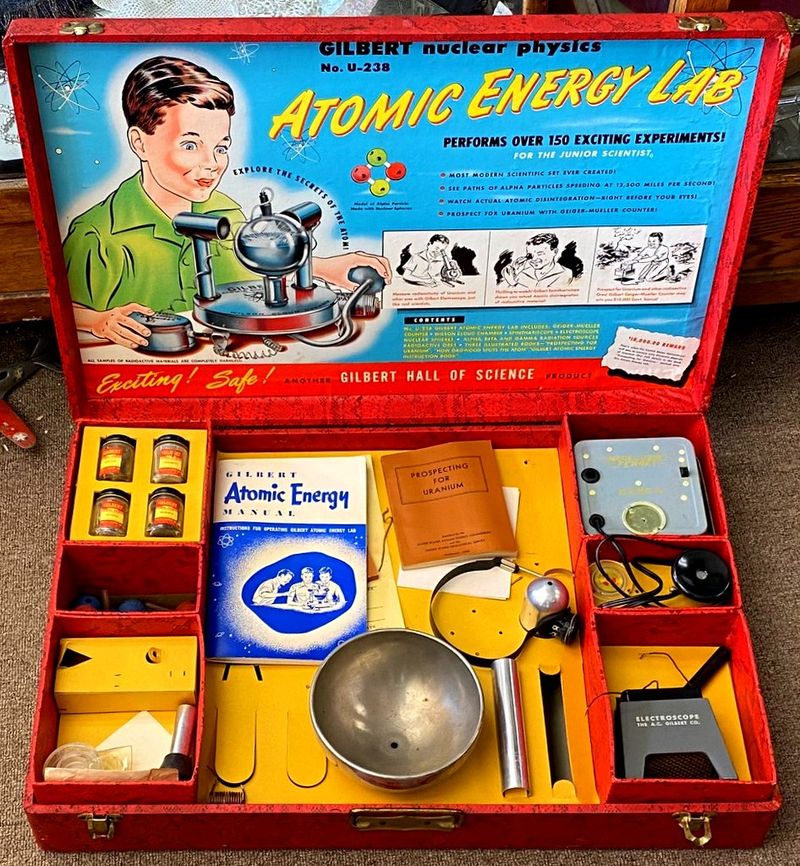
Radioactive materials in the classroom? You betcha! The 1950s embraced the atomic age with alarming enthusiasm, including science kits containing actual uranium samples. My jaw dropped when my science teacher grandfather showed me his old classroom demonstration kit labeled “ATOMIC ENERGY LAB” complete with Geiger counter.
Science classes featured hands-on experiments with chemicals we wouldn’t let anywhere near children today. Mercury was passed around in open containers for students to touch and marvel at. Chemistry sets included substances now recognized as carcinogenic or toxic, all without protective equipment beyond maybe an apron.
The space race and nuclear age created a science education boom where practical safety concerns took a backseat to excitement about scientific progress. Teachers demonstrated chemical reactions that produced colorful smoke, flames, and sometimes minor explosions – all met with applause rather than safety audits.
14. Dress Code Extremes
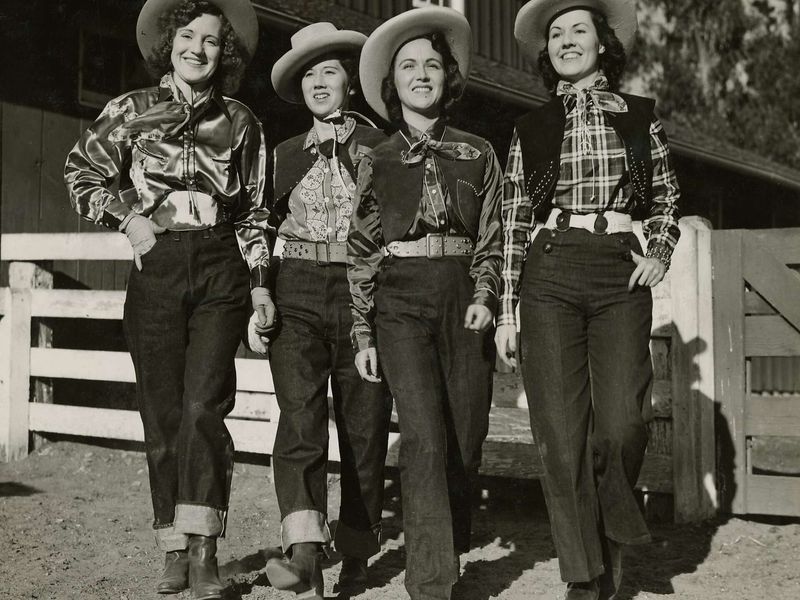
Girls sent home for wearing pants? Absolutely standard practice! The 1950s classroom dress code would make modern students stage an immediate rebellion. My aunt Martha still fumes about getting detention for wearing socks that didn’t match her plaid skirt.
Boys faced equally strict requirements: pressed shirts tucked in, belts mandatory, hair cut above the ears and collar. Some schools even measured boys’ hair with rulers! Girls endured daily hemline checks – kneeling on the floor while teachers measured the distance between skirt hem and floor.
The reasoning behind these stringent codes wasn’t just about appearance but about maintaining social order and gender norms. Schools openly stated that proper attire promoted proper behavior. Dress code violations weren’t minor infractions but serious disciplinary issues that could result in calls home, detention, or even suspension – creating a strange world where your socks could determine your educational fate.
15. Classroom Bomb Shelters

Beneath the cheerful alphabet charts and arithmetic posters lurked a darker reality – many 1950s classrooms doubled as fallout shelters. Metal barrels labeled “EMERGENCY RATIONS” and “CIVIL DEFENSE WATER” sat alongside bookshelves, a constant reminder of nuclear anxiety.
Schools conducted regular shelter drills where students practiced filing into designated areas, usually interior hallways without windows or basement rooms. My mother-in-law remembers her elementary school’s basement shelter with its strange chemical toilet facilities and stacks of government-issued survival crackers that teachers warned were “only for real emergencies.”
Some schools went further, constructing dedicated fallout shelters with reinforced concrete walls and specialized ventilation systems. Children were taught to recognize the distinctive yellow and black fallout shelter signs and to understand the difference between regular fire drills and the more ominous air-raid sirens. Learning and nuclear annihilation preparation went hand in hand!
16. Reading Group Segregation

Bluebirds, Redbirds, and Cardinals – innocent-sounding reading groups that weren’t fooling anyone! These transparently hierarchical systems sorted students by ability with all the subtlety of a foghorn. Every kid knew exactly which group was for the “smart kids” and which was for those who struggled.
My father still remembers the shame of being placed in the lowest group (the Turtles) in second grade. Teachers made no effort to disguise these ability-based divisions, often placing higher groups in privileged positions within the classroom and giving them more attention and advanced materials.
Unlike today’s flexible grouping approaches, these placements were nearly permanent social markers. Students rarely moved between groups, creating early academic castes that followed children throughout their elementary years. The psychological impact of this public ranking system left lasting impressions on children’s academic self-concept and confidence.
17. Communism Identification Lessons
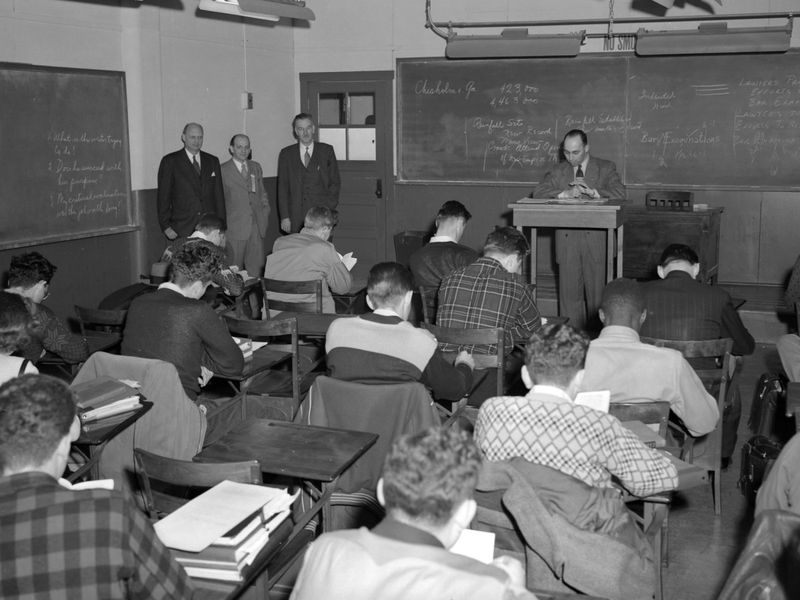
“How to Spot a Communist” wasn’t just a political pamphlet – it was literally part of the curriculum! Students in the 1950s received regular lessons on identifying supposed communist sympathizers, complete with illustrated worksheets and bizarre warning signs to watch for.
My uncle recalls his fifth-grade teacher distributing comic books produced by the government that portrayed communists as sneaky infiltrators who might be hiding anywhere – even among their neighbors or family friends. Schools held mandatory viewings of propaganda films like “Red Nightmare” that depicted what would happen if America fell to communism.
These lessons extended beyond simple political education into encouraging active vigilance and reporting of suspicious activities. Children were taught specific phrases, beliefs, and behaviors that might indicate communist leanings. Some schools even sent students home with checklists to evaluate whether adults in their lives might harbor dangerous sympathies – talk about uncomfortable dinner conversations!
18. Ink Monitor Responsibilities
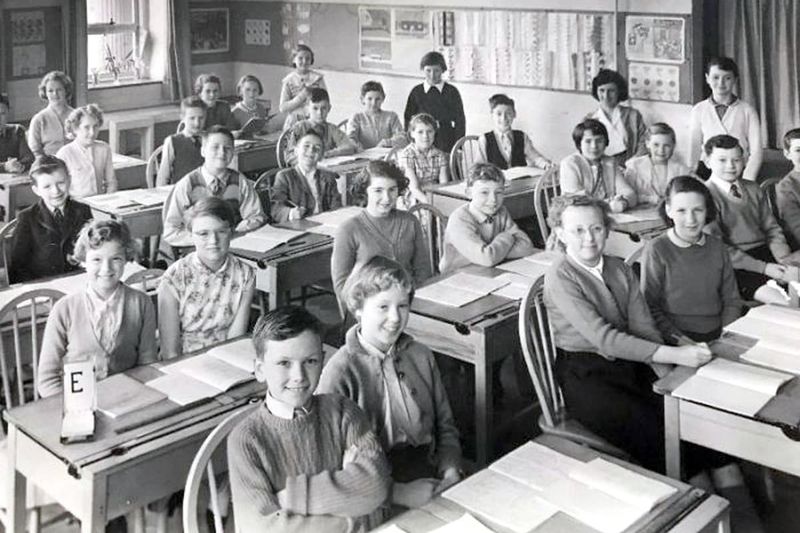
Power-hungry ten-year-olds wielding ink bottles – what could possibly go wrong? The coveted position of classroom ink monitor came with surprising status and responsibility in the fountain pen era. I laughed out loud when my grandmother described the elaborate ink-filling ritual that punctuated each school day.
Ink monitors arrived early to prepare the classroom’s inkwells, carefully pouring thick black liquid from glass bottles into each desk’s built-in reservoir. They wore special protective aprons and wielded eyedroppers with solemn precision. The position required steady hands and trustworthiness – ink stains on the wooden floors or desks meant serious trouble.
These student helpers also maintained the classroom’s supply of blotting paper, cleaned clogged pens, and reported students who were careless with their ink usage. The role created a fascinating classroom hierarchy where responsible use of writing materials was elevated to nearly sacred status.
